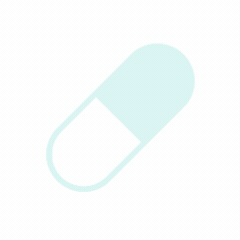Drug updated on 4/15/2025
| Dosage Form | Tablet (oral: 750 mg) |
| Drug Class | Triazaacenaphthylene bacterial type II topoisomerase inhibitors |
| Ongoing and Completed Studies | ClinicalTrials.gov |
Indication
- Indicated for the treatment of female adult and pediatric patients 12 years of age and older weighing at least 40 kilograms (kg) with uncomplicated urinary tract infections (uUTI) caused by the following susceptible microorganisms: Escherichia coli, Klebsiella pneumoniae, Citrobacter freundii complex, Staphylococcus saprophyticus, and Enterococcus faecalis.
Latest News

Summary
- This summary is based on the review of one randomized controlled trial. [1]
- In the Efficacy of Gepotidacin for the Treatment of Uncomplicated Urinary Tract Infections (EAGLE-2) trial of non-pregnant patients assigned female at birth aged 12 years or older with uncomplicated urinary tract infections (uUTIs), gepotidacin achieved a therapeutic success rate of 50.6% (162 out of 320 participants) compared to 47.0% (135 out of 287 participants) for nitrofurantoin; the adjusted difference was 4.3% (95% confidence interval [CI] -3.6 to 12.1), indicating non-inferiority.
- In the EAGLE-3 trial within the same population, gepotidacin showed a therapeutic success rate of 58.5% (162/277) versus 43.6% (115/264) for nitrofurantoin; the adjusted difference was 14.6% (95% CI 6.4 to 22.8), demonstrating superiority.
- The studies included non-pregnant individuals assigned female at birth, aged ≥12 years and ≥40 kg, with no subgroup-specific effectiveness outcomes reported.
- In the EAGLE-2 trial, the most common adverse event with gepotidacin was diarrhea (14%, 111/766), while the most common with nitrofurantoin was nausea (4%, 29/760); no life-threatening or fatal events were reported, and adverse events were mostly mild or moderate.
- In the EAGLE-3 trial, the most common adverse event with gepotidacin was diarrhea (18%, 147/804), while the most common with nitrofurantoin was nausea (4%, 35/798); no life-threatening or fatal events were reported, and adverse events were mostly mild or moderate.
- The studies included non-pregnant females aged ≥12 years with uncomplicated urinary tract infections who presented with ≥2 symptoms (e.g., dysuria, frequency, urgency, or lower abdominal pain) and evidence of urinary nitrite, pyuria, or both; although randomization was stratified by age category and history of recurrent infections, no subgroup-specific effectiveness or safety outcomes were reported.
Product Monograph / Prescribing Information
| Document Title | Year | Source |
|---|---|---|
| Blujepa (gepotidacin) Prescribing Information. | 2025 | GlaxoSmithKline Durham, NC |
Randomized Controlled Trials
| Document Title | Sex Distribution | Year | Source |
|---|---|---|---|
| Oral gepotidacin versus nitrofurantoin in patients with uncomplicated urinary tract infection (EAGLE-2 and EAGLE-3): two randomised, controlled, double-blind, double-dummy, phase 3, non-inferiority trials | Data not availableSubjects F: null% M: null% | 2024 | The Lancet |
Sex Distribution:
Year:
2024
Source:The Lancet

